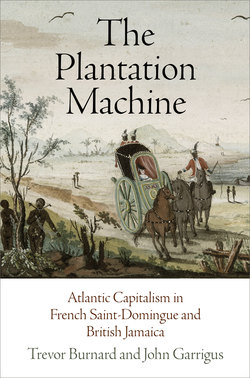The Plantation Machine

Реклама. ООО «ЛитРес», ИНН: 7719571260.
Оглавление
Trevor Burnard. The Plantation Machine
Отрывок из книги
THE PLANTATION MACHINE
Peter C. Mancall, Series Editor
.....
Because of their mountainous interiors, in both colonies maritime transportation from one region to another was often easier than overland travel. The 1763 Craskell/Simpson map of Jamaica shows far more attention to plantations and to anchorage points than to the road network. Saint-Domingue’s maps, like one drawn in 1722 by Guillaume Delisle, show roads more clearly, but because these images contained only vague topographical detail they exaggerate the ease of overland travel.31 Only about 14 percent of Jamaica is level land, some of it in alluvial plains, the largest of which lie along the southern coast. The remainder is found in valleys enclosed by the central limestone plateaus. As late as the 1930s, geographers considered only 10 percent of the island to be arable.32 In modern Haiti, similarly, experts conclude that only one-fifth of land is appropriate for farming.33
Jamaica’s geography, despite the challenges it posed to colonists, allowed a greater commercial and administrative centralization than was possible in Saint-Domingue. By the early eighteenth century the parishes of Kingston and St. Catherine, on the island’s eastern leeward side, had emerged as the colony’s political and mercantile center. The political capital at Spanish Town, the commercial center in Kingston, and smuggling and pirate town of Port Royal were all located within a twenty-mile radius. Saint-Domingue’s size, unusual coastline, and mountainous interior prevented such coherence. The most important commercial port, Cap Français, on the Atlantic coast, was so vulnerable to attack that French administrators created a series of capitals on the western coast. In the 1750s they finally settled on Port-au-Prince. Like Jamaica’s Spanish Town, this served as the official residence of the governor-general and the meeting place of the Superior Council of Port-au-Prince. Cap Français was so far away that it had its own Superior Council, and its own provincial governor. The colony’s southern coast also had its own governor, though never a Council. In terms of communication and administration, therefore, Saint-Domingue was “three colonies in one.”34
.....